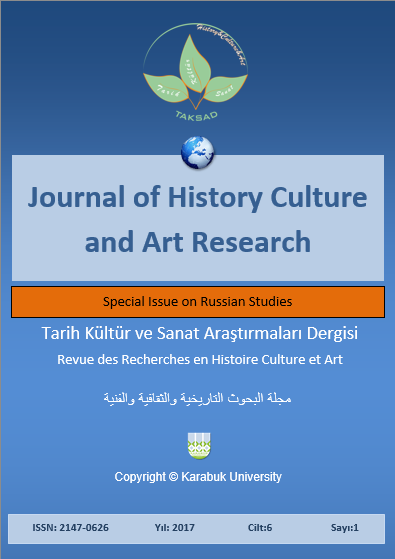The Real Picture of Professional Multidimensionality
DOI:
https://doi.org/10.7596/taksad.v6i5.1261Keywords:
Professional multidimensionality, Multidimensional competences, Multifunctionality, Multitasking, Integrity.Abstract
Professional multidimensionality is ability of a specialist to correlate the directions, approaches (integrity) and/or to combine performance of several functions (multifunctionality), to conjoin the simultaneous solution of several tasks (multitasking). The empirical research on identification of a real picture of professional multidimensionality of specialists in three fields of activity was performed by research associates group of the Nizhnekamsk office of UNESCO department at A.I. Herzen Russian State Pedagogical University under the leadership of the authors of this article. In their professional activity specialists most often apply such basic multidimensional competences as multifunctionality, multitasking and integrity. Empirical experiment covered 180 representatives of different spheres of professional activity. On the basis of experimental studies we received the following results. Rather high level of professional multidimensionality is shown by research associates – 27,9% of them possess multifunctionality, 23,3% – multitasking, 18,6% – integrity, 13,8% – the combined multidimensional competences. Among elementary school teachers professional multidimensionality is demonstrated thus: 21,1 % of them show multifunctionality, 24,7% – multitasking, 15,3% – integrity, 7.2% – the combined multidimensional competences. Professional multidimensionality among drivers of buses is demonstrated thus: 15,4 % of them possess multifunctionality, 13,5% – multitasking. Drivers of buses show absence of integrity and the combined multidimensional competences.
References
Albaili, M. A. (2006). Differences in Thinking Styles among Low, Average, and High Achieving College Students. Educational Psychology: An International Journal of Experimental Educational Psychology, 17(1-2), 171-177.
Bogataya, L. N. (2012). Philosophy of a multidimensional person. Multidimensionality and integrity of a person in philosophy, science and religion, pp. 219-226. International scientific educational conference. Kazan: Kazan University.
Kao, G. Y.; Lei, P. & Sun, C. (2008). Thinking Style impacts on Web Search strategies. Computers in Human Behavior, 24, 1330-1341.
Kaymanov, A. D. (2012). Training of a public transport driver: multidimensional competences. Kazan pedagogical magazine, 1, 68-72.
Kozeletsky, Y. (1991). A multidimensional person. Kiev: Lybid.
Manikhova, F. Y. (2012). Forming of multidimensional competences in students of teacher training college by the example of "Primary School Teacher" specialty. Abstract of a thesis for receiving an academic degree of Candidate of Pedagogical Studies. Izhevsk.
Morgun, V. F. (1992). Concept of multidimensional development of a personality and its appendix. Philosophical and sociological thought, 2, 27-40.
Ostapenko, A. A. (2007). Modeling of multidimensional pedagogical reality. Theory and technologies of a multidimensional person. Moscow: National education.
Richmond, A. S.; Krank, H. M. & Cummings, R. (2006). A Brief Research Report: Thinking Styles of Online Distance Education Students. International Journal of Technology in Teaching and Learning, 2(1), 58-64.
Shteynberg, V. E. (2002.) Didactic multidimensional tools: theory and practice. Moscow: National education.
Stephen, K. (2008). Do thinking styles of entrepreneurs matter in innovation? Journal of Global Business and Technology, 4(2), 24-34.
Yang, S. C. & Lin, W. C. (2004). The relationship among creative, critical thinking and thinking styles in Taiwan high school students. Journal of Instructional Psychology, 31(1), 3-45.
Yeh, Y. C. (2002). Preservice Teachers’ Thinking Styles, Disposition, and Changes Their Teacher Behaviors. International Conference on Computers in Education, 1, 610-611.
Zhang, L. F. (2001). Approaches and Thinking Styles in Teaching. The Journal of Psychology, 135(5), 547-561.
Downloads
Published
How to Cite
Issue
Section
License
All papers licensed under Creative Commons 4.0 CC-BY.- Share — copy and redistribute the material in any medium or format
- Adapt — remix, transform, and build upon the material for any purpose, even commercially.
Under the following terms:
Attribution — You must give appropriate credit, provide a link to the license, and indicate if changes were made. You may do so in any reasonable manner, but not in any way that suggests the licensor endorses you or your use.
- No additional restrictions — You may not apply legal terms or technological measures that legally restrict others from doing anything the license permits.







